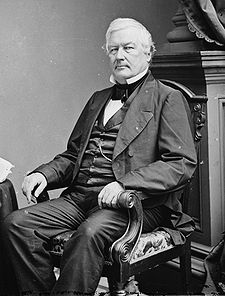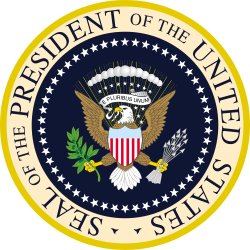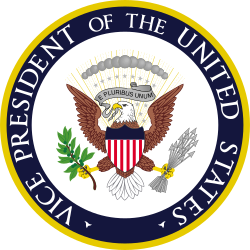Millard Fillmore
| Millard Fillmore | |
|---|---|
 | |
| 13. prezident Spojených států amerických | |
| Ve funkci: 9. července 1850 – 4. března 1853 | |
| Viceprezident | neobsazeno |
| Předchůdce | Zachary Taylor |
| Nástupce | Franklin Pierce |
| 12. viceprezident Spojených států amerických | |
| Ve funkci: 4. března 1849 – 9. července 1850 | |
| Prezident | Zachary Taylor |
| Předchůdce | George M. Dallas |
| Nástupce | William R. King |
| Člen Sněmovny reprezentantů USA za 32. okrsek státu New York | |
| Ve funkci: 4. března 1837 – 3. března 1843 | |
| Předchůdce | Thomas C. Love |
| Nástupce | William A. Moseley |
| Ve funkci: 4. března 1833 – 3. března 1835 | |
| Předchůdce | vytvořen volební obvod |
| Nástupce | Thomas C. Love |
| Stranická příslušnost | |
| Členství | Strana Whigů |
| Narození | 7. ledna 1800 Summerhill, New York |
| Úmrtí | 8. března 1874 (ve věku 74 let) Buffalo, New York |
| Příčina úmrtí | cévní mozková příhoda |
| Místo pohřbení | Forest Lawn |
| Choť | Abigail Fillmoreová (1826–1853) Caroline C. Fillmore (1858–1874) |
| Rodiče | Nathaniel Fillmore a Phoebe Millard |
| Děti | Mary Abigail Fillmore Millard Powers Fillmore |
| Příbuzní | Charles Dewitt Fillmore a Darius Ingraham Fillmore (sourozenci) |
| Profese | politik, advokát a státník |
| Náboženství | unitářství |
| Podpis | |
| Commons | Millard Fillmore |
| Některá data mohou pocházet z datové položky. | |
Millard Fillmore (7. ledna 1800 Summerhill – 8. března 1874 Buffalo) byl americký politik, který v letech 1850–1853 byl 13. prezident Spojených států amerických a poslední člen americké Strany Whigů, který tento úřad zastával.[1]
Byl jmenován z funkce viceprezidenta v zastoupení po smrti prezidenta Zacharyho Taylora, který zemřel na akutní gastroenteritidu. Stal se tak druhým americkým prezidentem, který se takto ujal moci. Nikdy však nebyl zvolen za prezidenta při vlastní kandidatuře. Poté, co dosloužil Taylorovo volební období, nebyl whigy ani nominován na prezidenta ve volbách v roce 1852 a v roce 1856 znovu neuspěl ve volbách jako kandidát nacionalistické strany Know Nothing. Zemřel 8. března 1874 v důsledku mozkové mrtvice.[2]
Vláda Millarda Fillmorea
| Vláda Millarda Fillmorea | ||
|---|---|---|
| Úřad | Osoba | Období služby |
| Prezident | Millard Fillmore | 1850–1853 |
| Viceprezident | Nejmenován | 1850–1853 |
| Ministr zahraničí | Daniel Webster | 1850–1852 |
| Edward Everett | 1852–1853 | |
| Ministr financí | Thomas Corwin | 1850–1853 |
| Ministr války | Charles M. Conrad | 1850–1853 |
| Ministr spravedlnosti | John J. Crittenden | 1850–1853 |
| Ministr pošt | Nathan K. Hall | 1850–1852 |
| Samuel D. Hubbard | 1852–1853 | |
| Ministr námořnictva | William A. Graham | 1850–1852 |
| John P. Kennedy | 1852–1853 | |
| Ministr vnitra | Thomas M. T. McKennan | 1850 |
| Alexander H. H. Stuart | 1850–1853 | |
Odkazy
Reference
Externí odkazy
 Obrázky, zvuky či videa k tématu Millard Fillmore na Wikimedia Commons
Obrázky, zvuky či videa k tématu Millard Fillmore na Wikimedia Commons - (anglicky) Bílý dům – Millard Fillmore
- (anglicky) Encyclopædia Britannica – Millard Fillmore
Média použitá na této stránce
Millard Fillmore (13th president of the United States). Image by Mathew B. Brady circa 1855-1865, and forms part of the Library of Congress Brady-Handy photograph collection.
Signature of Millard Fillmore.
Seal of the Vice President of the United States. The blazon is defined in Executive Order 11884 as:
The design is the same as the Seal of the President of the United States, except that there is no ring of stars, the clouds are gray (instead of proper), the stars are gray (instead of argent), the scroll is gray (instead of white), the arrows are gray (instead of proper), and the background colors and inscription (obviously) differ.The Coat of Arms of the Vice President of the United States shall be of the following design:
SHIELD: Paleways of thirteen pieces argent and gules, a chief azure; upon the breast of an American eagle displayed holding in his dexter talon an olive branch proper and in his sinister a bundle of thirteen arrows gray, and in his beak a gray scroll inscribed "E PLURIBUS UNUM" sable.
CREST: Behind and above the eagle a radiating glory or, on which appears an arc of thirteen cloud puffs gray, and a constellation of thirteen mullets gray.
The Seal of the Vice President of the United States shall consist of the Coat of Arms encircled by the words "Vice President of the United States."




